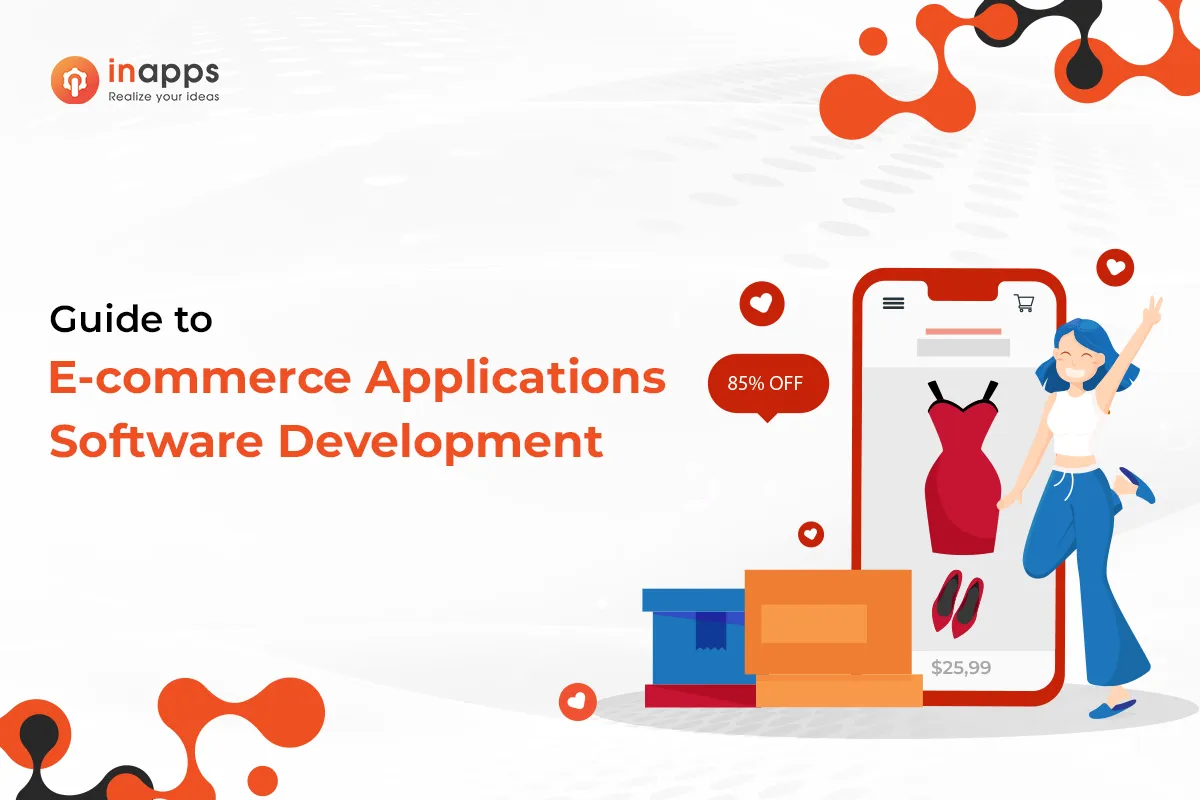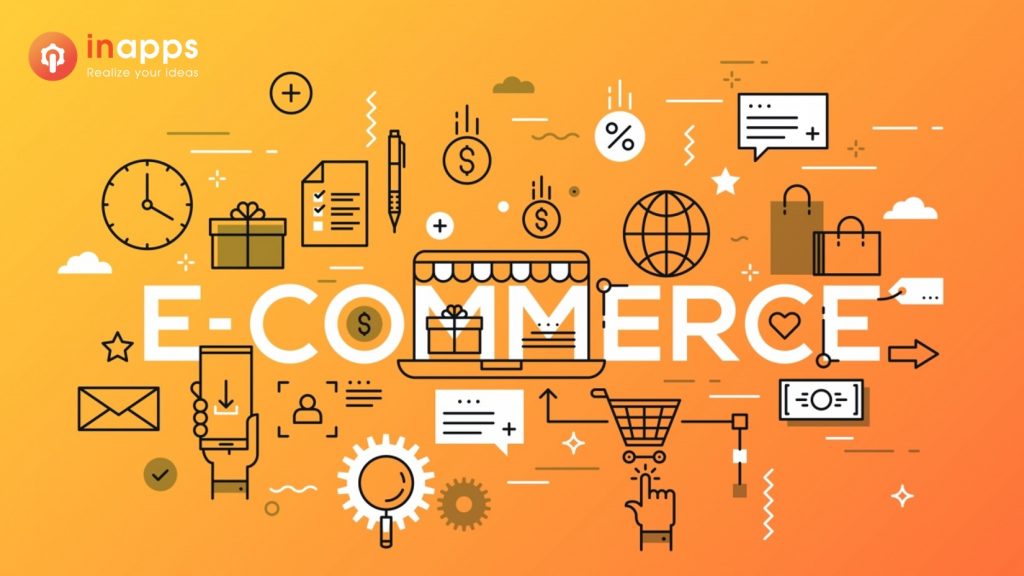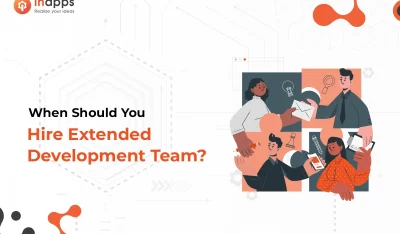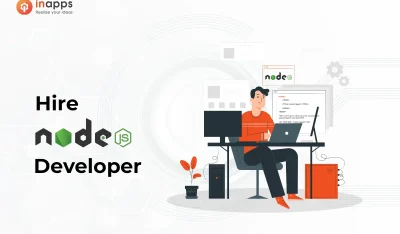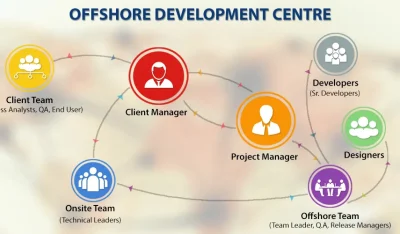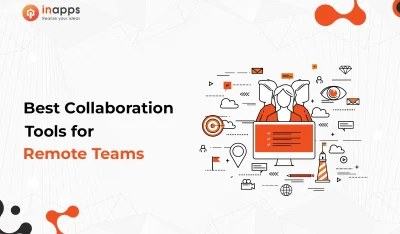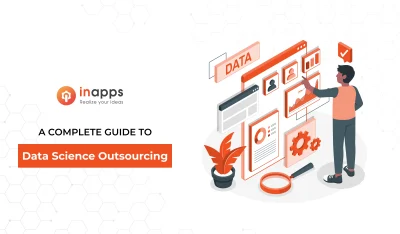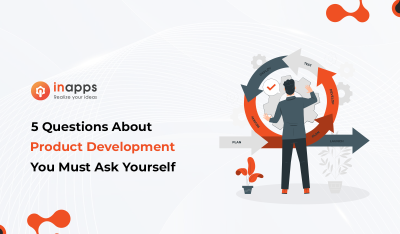- Home
- >
- Offshore News
- >
- A Quick Guide to E-Commerce Applications Software Development
Starting an online store? Then, understanding e-commerce applications software development is your first step. This process is about creating an online shop that’s easy and enjoyable to use, not just for setting up a website. From making sure payments are secure to ensuring the site works well on all devices, there’s a lot to consider.
Choosing the right platform and adding essential features are big decisions that can shape your success. This guide will help you navigate these choices, breaking down the jargon into simple, actionable advice. By the end of this post, you’ll know exactly what you need to do to start building your e-commerce application. Let’s get started on this journey together, making sure you have all the tools and knowledge to create a thriving online store.
1. What is E-commerce Applications Software Development?
E-commerce applications software development involves creating programs that enable businesses to sell goods and services over the internet. Imagine a digital store where you can browse, select, and buy products without leaving your house—that’s essentially what these applications provide. This process isn’t just about setting up a website; it’s about building a seamless, user-friendly shopping experience that runs smoothly on computers, phones, and tablets.
At its core, this development process includes various tasks like designing the website layout, ensuring secure payment transactions, managing inventory, and integrating customer support. Developers use different programming languages and tools to create these features, aiming to make online shopping as easy and enjoyable as possible for the consumer.
For example, if you’ve ever shopped online and used a search bar to find a specific product, added items to a virtual cart, and then checked out using your credit card or a digital wallet like PayPal, you’ve interacted with an e-commerce application. The development of such applications is geared towards providing a convenient and accessible shopping environment that meets the needs of today’s digital consumer.
By focusing on user experience, security, and efficiency, e-commerce applications software development plays a pivotal role in the success of online businesses, helping them to attract, engage, and retain customers.
2. Choosing the Right E-commerce Solutions
Choosing the right e commerce applications and software development solutions can significantly impact the success and scalability of your online business. Here’s a closer look into how SaaS, On-Premises and Custom Development compare.
2.1 SaaS (Software as a Service)
SaaS platforms are pre-built, cloud-based services that you can subscribe to on a monthly or annual basis. These platforms are hosted and maintained by the service provider, so you are not responsible for handling the software’s installation, maintenance, or infrastructure. SaaS solutions are quick to deploy and easy to scale. That’s why they’re ideal for businesses that want to get up and running fast without significant upfront investments in hardware or software. Examples include Shopify and BigCommerce.
- Shopify: Ideal for beginners and small to medium-sized businesses, Shopify is a user-friendly option that doesn’t skimp on power. It offers a vast array of templates to get your store up and running quickly, along with extensive app integrations. Shopify’s main draw is its ease of use, allowing even those with minimal technical skills to launch an e-commerce application. It supports various payment gateways and has excellent customer support. For e-commerce applications software development, Shopify provides a solid, flexible foundation that can grow with your business.
- BigCommerce: This platform offers a robust set of e-commerce tools out of the box, making it great for businesses looking to scale quickly. BigCommerce is known for its comprehensive set of features, including multi-channel selling, excellent SEO tools, and extensive security measures. It’s designed to grow with your business, making it suitable for a wide range of sizes and industries. For e-commerce applications software development, BigCommerce is particularly appealing for those looking to minimize the need for external apps and plugins.
2.2 On-premises E-commerce applications
On-premises applications, on the other hand, refer to software installed and run on computers on the premises of the person or organization using the software, rather than at a remote facility such as a server farm or cloud. On-premises solutions offer more control over the environment and can be customized extensively, but they require a higher level of technical expertise to set up and maintain. They also typically involve higher initial costs for hardware, software, and ongoing maintenance.
2.3 Custom E-commerce Applications Software development
Custom E-commerce app development can occur in both on-premises and cloud-based environments. Custom development means tailoring the software to meet specific business needs, which can be done by modifying a pre-built platform (like WooCommerce or an open-source version of Magento) or by building a completely bespoke solution from scratch. Whether this software is then deployed on-premises or hosted in the cloud depends on the business’s technical infrastructure, preferences, and requirements.
In making your decision, consider your business’s current needs, future goals, technical capabilities, budget, and how much control you wish to have over the e-commerce experience. Sometimes, a combination of these solutions might serve you best, such as starting with a SaaS platform for immediate needs while planning for a custom solution long-term.
3. Key Features of Successful E-commerce Applications Software Development
Successful E-commerce Applications Software Development must have the following features:

- Content Management Systems (CMS)
This application is the key to an amazing customer experience. A conventional CMS commerce integration provides services specifically designed to work in parallel with content management software, producing seamless, beautiful digital experiences that engage customers and drive revenue.
Inventory Management Integration
Modern ERP (Enterprise Resource Planning) systems like SAP or Oracle have sophisticated modules for inventory management that can seamlessly integrate with e-commerce platforms. The challenge often lies in customizing these integrations to ensure real-time accuracy without impacting system performance. The advent of cloud-based solutions has significantly improved scalability and data synchronization capabilities.
- Flexible Payments
Customers can order the desired items and pay for them in a variety of supported E-payment options such as credit cards, PayPal, etc. Certain E-commerce operations are executed via email as well. These may include sending order placement confirmations or electronic invoice notifications to the buyer’s personal mailbox after a particular purchase.
Advanced Security Features for Transactions
As cyber threats have evolved, so too have the technologies to combat them. Implementing advanced encryption and complying with PCI DSS are foundational. However, the real game-changer has been the integration of blockchain technology for payment processing, providing an unparalleled level of transaction security. Implementing 2FA has become simpler with APIs from Twilio Authy or Google Authenticator, making this an essential layer of user account protection.
Personalized Recommendations
The evolution of data analytics and machine learning technologies has made personalized recommendations not just an option but a necessity for e-commerce success. Utilizing tools like Apache Spark for big data processing allows for real-time recommendation engines that can dramatically enhance user engagement. The key here is balance; too much personalization can sometimes feel invasive, so it’s crucial to refine algorithms to be helpful without being overwhelming.
Robust Customer Support Features
AI-powered chatbots have revolutionized customer support in e-commerce. Utilizing platforms like IBM Watson or Google Dialogflow, e-commerce sites can provide 24/7 support. The challenge is to train these bots effectively to handle a wide range of queries, requiring ongoing investment in AI training models and natural language processing improvements.
One-Click Checkout
Amazon’s patent on one-click checkout has expired, opening the doors for e-commerce platforms to simplify their checkout processes. The key technology here is secure tokenization of user payment information, ensuring that this convenience does not compromise security.
Robust Customer Support Features
AI-powered chatbots have revolutionized customer support in e-commerce. Utilizing platforms like IBM Watson or Google Dialogflow, e-commerce sites can provide 24/7 support. The challenge is to train these bots effectively to handle a wide range of queries, requiring ongoing investment in AI training models and natural language processing improvements.
4. Building Your E-Commerce Software Development Team
4.1 Identify Core Roles
Your e-commerce applications software development team should include a project manager to keep everything on track, developers skilled in the technologies your platform requires (such as HTML, CSS, JavaScript for front-end; Python, Ruby, or PHP for back-end), designers who can create a user-friendly and attractive interface, and QA (Quality Assurance) specialists to ensure your application works flawlessly.
4.2 Look for E-commerce Experience
Experience in e-commerce applications software development is crucial. Team members should understand the unique challenges of online retail, from securing transactions to managing inventory. For example, a developer with years of experience in implementing shopping carts and payment gateways will be invaluable to your e-commerce projects.
4.3 Value Soft Skills
Communication, problem-solving, and adaptability are as important as technical skills. Your team will need to work closely together, often under pressure to meet deadlines or solve unexpected issues. New technologies, consumer trends, and regulatory requirements are emerging regularly. So a e-commerce applications software development team must quickly adapt to these changes, learn new skills, and pivot strategies.
Learn more: Managing Software Development Teams Like a Pro
4.4 Consider a Mix of Insourcing and Outsourcing
Building an in-house team offers you direct control over the project’s direction and ensures a dedicated focus. It also fosters a deep understanding of your brand and facilitates seamless collaboration across departments. However, consider outsourcing specific tasks or roles because you can access specialized expertise not available in-house, often at a lower cost. It’s particularly useful for niche areas like SEO optimization, which requires up-to-date knowledge of search engine algorithms. Or mobile app development, where specific technical skills may be needed for a limited time.
5. Future Trends in E-commerce Applications Software Development
Here’s a few emerging E-commerce Applications Software Development trends seem poised to reshape the landscape significantly, followed up by how you can incorporate them into your e-commerce apps to stay ahead.
5.1 Smart Shopping with AI
Imagine a shopping assistant that knows exactly what you like and suggests products you love. That’s what Artificial Intelligence (AI) does in e-commerce. It learns from your shopping habits to make your experience more personal and enjoyable.
Integrating AI into e-commerce platforms requires developers to work with machine learning models and data analytics. This means they’ll need to design systems that can collect and analyze customer data responsibly to personalize shopping experiences without compromising privacy.
5.2 Try Before You Buy with Augmented Reality (AR)
Augmented Reality is a cool trend in E-commerce Applications Software Development that you can’t miss. AR lets you see how a product would look in your home or on you before you buy it. It’s like trying on a pair of glasses using your phone’s camera to see how they look on your face.
For AR to work, e-commerce applications must be developed with advanced graphics and camera integration capabilities. Developers will focus on creating immersive, interactive experiences that work smoothly across various devices, enhancing customer confidence and reducing returns.
5.3 Shopping with Voice Commands
Voice commerce allows you to shop by simply speaking to devices like smartphones or smart speakers. You can order a pizza or buy a sweater without lifting a finger, making shopping super convenient.

Incorporating voice commerce involves developing natural language processing (NLP) and voice recognition functionalities within e-commerce platforms. This requires a focus on understanding user intent from spoken commands, making shopping as easy as talking.
5.4 Safe and Transparent Shopping with Blockchain
Blockchain technology has been around for more than a decade. It helps make shopping safer and more open. It ensures that your payment is secure and lets you trace where your product comes from, which is great for knowing your product is genuine.
Implementing blockchain technology necessitates a shift towards developing decentralized applications. This includes securing transactions and offering transparency in product sourcing, requiring developers to have expertise in blockchain protocols and smart contracts.
5.5 Flexible Shopping Experiences with Headless Commerce
Headless commerce separates the shopping website you see from the technical background that runs it. This means online shops can update quickly and offer a smooth shopping experience on phones, computers, or even smartwatches.
Adopting headless commerce means developers must build e-commerce applications as a series of connected services, accessible through APIs. This approach allows for more flexibility in presenting products across different platforms but requires a solid understanding of API development and management.
5.6 Green Shopping
As we’re entering 2030, more shoppers care about the planet. E-commerce sites that use less packaging or support ethical brands are becoming popular because they help shoppers make choices that are good for the environment.
Developing for sustainability may involve creating features that highlight eco-friendly products or optimizing the application to reduce its carbon footprint. Developers might work on incorporating badges for sustainably made products or designing more efficient logistics tracking to support minimal environmental impact shipping options.
In conclusion, this blog has guided you through e-commerce applications software development, from understanding what it entails, selecting the right platform, to detailing must-have features and planning your development journey. With the world evolving, staying informed and adaptable is key to creating successful online shopping experiences.
>> Read next: Ultimate Guide To Hire A Software Development Team
Let’s create the next big thing together!
Coming together is a beginning. Keeping together is progress. Working together is success.




